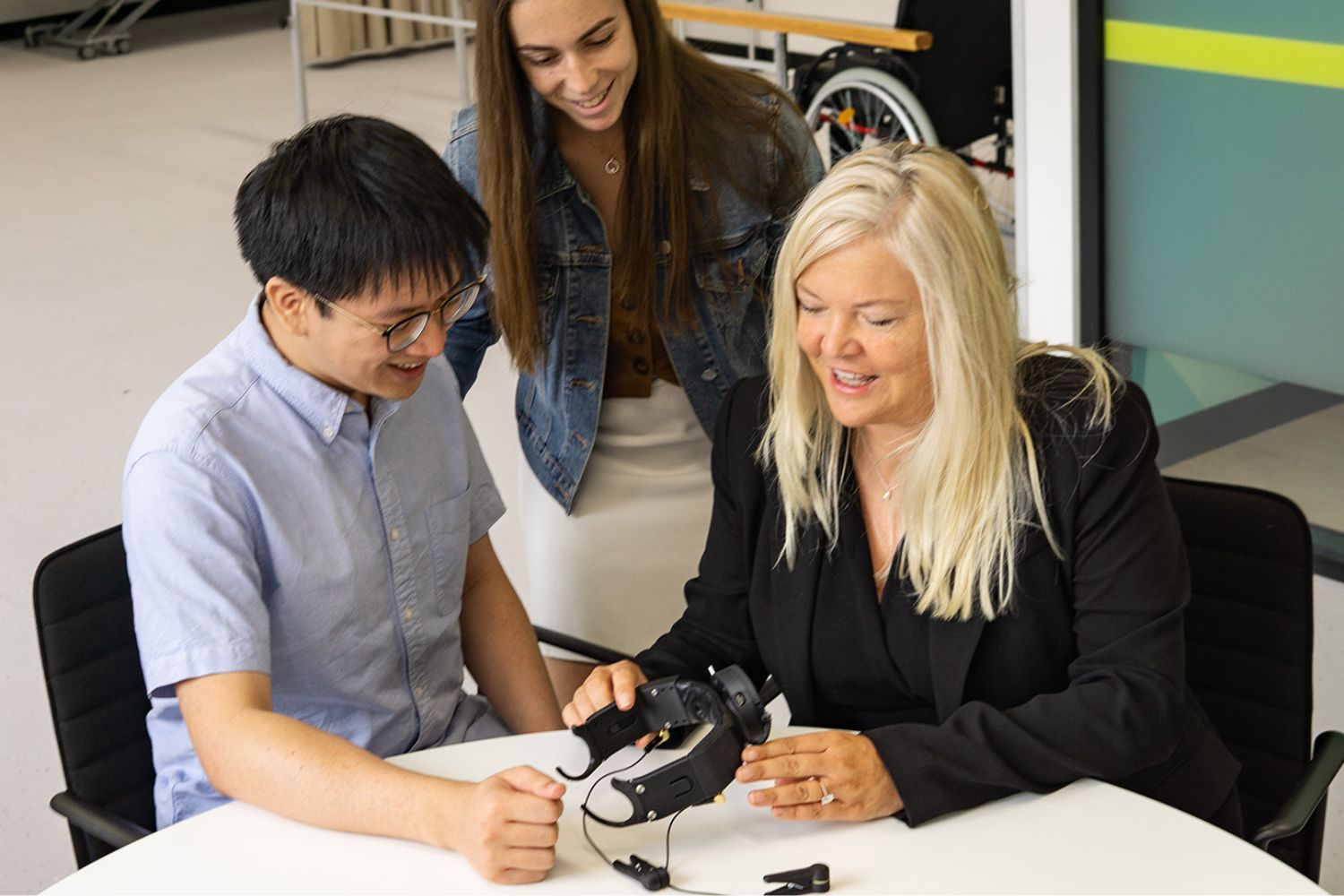An innovative interactive game designed to help patients modify their own brain activity has shown encouraging results in an initial trial for providing chronic nerve pain relief. This development, emerging from research led by psychologists at the University of New South Wales (UNSW) in Sydney, Australia, could pave the way for a new class of drug-free treatments, offering hope to those suffering from persistent nerve pain.
Understanding PainWaive: A Novel Neurofeedback Approach
The system, named PainWaive, functions as a training platform that teaches users to regulate the abnormal brain activity often associated with nerve pain. It aims to be an in-home, non-invasive alternative to opioid medications. The core components of the PainWaive system include an electroencephalogram (EEG) headset that records brain activity and a paired app. This app guides patients through neurofeedback games, instructing them on how to control their brainwaves. The initial study, with findings published in The Journal of Pain in April, focused on four participants suffering from corneal neuropathic pain—a debilitating condition causing severe hypersensitivity in the eyes, face, or head. Impressively, three out of four participants reported significant pain reductions five weeks after their final treatment session, according to a UNSW statement.
The Science Behind Brainwave Regulation for Pain
The exact causes of corneal neuropathic pain are often unclear, and the condition is notoriously resistant to existing treatments. Researchers hypothesized that altering the brainwave patterns typically associated with nerve pain could alleviate symptoms. “The brainwaves of people with neuropathic pain show a distinct pattern: more slow theta waves, fewer alpha waves, and more fast, high beta waves,” explained co-lead author Sylvia Gustin, a clinical psychologist and UNSW professor. Her research has focused on changes within the thalamus—a key brain structure that relays sensory and motor signals—linked to nerve pain. “We believe these changes interfere with how the thalamus talks to other parts of the brain, especially the sensory motor cortex, which registers pain,” she added. “I wondered, can we develop a treatment that directly targets and normalizes these abnormal waves?” This inquiry was the catalyst for PainWaive’s development.
Initial Clinical Trial: Encouraging Findings and Future Steps
For the first clinical trial, Professor Gustin and her colleagues equipped four participants with kits containing an EEG headset and a tablet pre-loaded with the PainWaive game app. Participants also received coaching on mental strategies, such as relaxation techniques, to help them shift their brainwaves from an abnormal to a normal state. The research team assessed the participants’ corneal neuropathic pain symptoms immediately after the 20 PainWaive sessions (conducted over four weeks) and again five weeks post-treatment. During these follow-up periods, participants were encouraged to continue applying the brainwave-altering strategies they had learned. The outcomes suggest that three of the four participants experienced pain relief comparable to or even greater than that typically provided by opioids.
While these early results are promising, the researchers acknowledge the study’s limitations. “Restrictions in the study’s size, design and duration limit our ability to generalize the findings or rule out placebo effects,” stated co-lead author Negin Hesam-Shariati, a researcher at UNSW’s NeuroRecovery Research Hub. “But the results we’ve seen are exciting and give us confidence to move to the next stage and our larger trial.” The team is now actively recruiting for two upcoming trials. These will investigate PainWaive’s effectiveness in reducing chronic spinal pain and chronic nerve pain in individuals with spinal cord injuries.
A Potential Breakthrough in Drug-Free Pain Management
The pursuit of effective drug-free pain treatments is particularly critical given the ongoing opioid crisis. While recent provisional data indicates a 24% decline in opioid-related deaths in the U.S. between 2023 and 2024, the demand for more non-opioid pain management solutions remains high. Hesam-Shariati, Gustin, and their colleagues are optimistic that as PainWaive advances through further clinical trials, it will meet this need. “Owning the technology offers us the potential to one day offer PainWaive as a truly affordable, accessible solution for at-home pain management, especially for those with limited access to traditional treatments,” Gustin envisioned.
Conclusion
The PainWaive system represents a significant step forward in the search for innovative, non-invasive solutions for chronic nerve pain relief. By empowering patients to modulate their own brain activity through an interactive game, this neurofeedback approach offers a tangible alternative to pharmacological interventions. Although further research is essential to validate its efficacy and broaden its applications, the initial findings provide substantial hope for individuals living with chronic pain and highlight the potential of technology-driven, patient-centered care in revolutionizing pain management.











